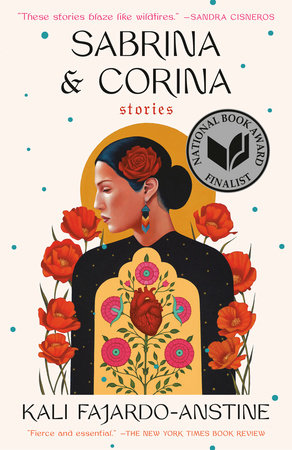
Angelisse Alvarez
Contributing Writer
When navigating the final months of 2020, “Sabrina & Corina” by Kali Fajardo-Anstine was one of my last reads.
This moving collection of short stories sat itself into the forefront of my mind since, it immediately became very special to me.
“Sabrina & Corina” is Kali Fajardo-Anstine’s debut collection, published on April 2, 2019. Stories are nestled into the arms of Denver, Colorado where the eternal presence of Latinx and Indigenous ancestry echoes across generations.
This ancestry and rich cultural history informs the concept of “home” and what defines it to characters finding themselves and searching for answers.
Indigenous Latina protagonists pilot “Sabrina & Corina.” Their stories highlight self-exploration, the strength of ancestral connection during times of distress, honest depictions of coping with trauma and the need to be seen.
The last theme reverts my mind directly to the book’s cover, in which a heart is visible through an open chest.
In the collection’s title story, “Sabrina & Corina”, Sabrina is isolated from her family, wanting to be valued in a world that dehumanizes her.
In “Sisters”, Doty is attracted to a young Filipina, Lucia, who has gone missing. Invested in her disappearance, they are bound by shared traumas and suppressed voices during the 1950s.
Ana’s personal knowledge of the Navajo origin story (in a history class abiding by a whitewashed curriculum) just might help her pass in “Ghost Sickness.” And Cole, a recovering alcoholic in “Tomi”, is not defined by a mistake made when she was a teenager. She beautifully shows the extent of who she is to her family.
Fajardo-Anstine accentuates ancestral presence by crafting a brilliant sense of circularity in “Sabrina & Corina.” Often are characters in stories occurring decades earlier referenced as late or distant relatives of characters in present day.
A history of trauma and violence against women haunt the narratives, and we are thus prompted to not forget them.
Mothers in this collection are allowed to be complex and unconventional. In “Any Further West”, a sex-worker’s fierce love for and commitment to her daughter is not belittled, and neither is she — Desiree is intently explored.
In other stories, young mothers distance themselves from their families, and we are presented with implications of trauma and pressures that influenced their decisions, along with the trauma endured by their abandoned children.
Furthering its celebration of women, “Sabrina & Corina” focuses much on the relationships women have with each other. Relationships between mothers and their daughters, from the closely-knit to the strained, are explored. The same applies to sisters and cousins.
Culture, love, and resilience either binds them together or grounds them individually.
The women in this collection are also survivors.
I am charmed by the role of grandmothers in “Sabrina & Corina”, too. They are often the consistent, lively glue of families.
And in “Galapago”, Pearla Ortiz is adamant that she won’t move into senior housing, which the devastating gentrification of Galapago Street and the westside of Denver is pushing her towards.
The relationships between grandmothers, their daughters and granddaughters are a lovely treat to read.
I urge our audience to read “Sabrina & Corina”. I will be following Kali Fajardo-Anstine’s future work and I am thankful that this collection found its way into my life.
Email Angelisse at:
aalvarez4@live.esu.edu

